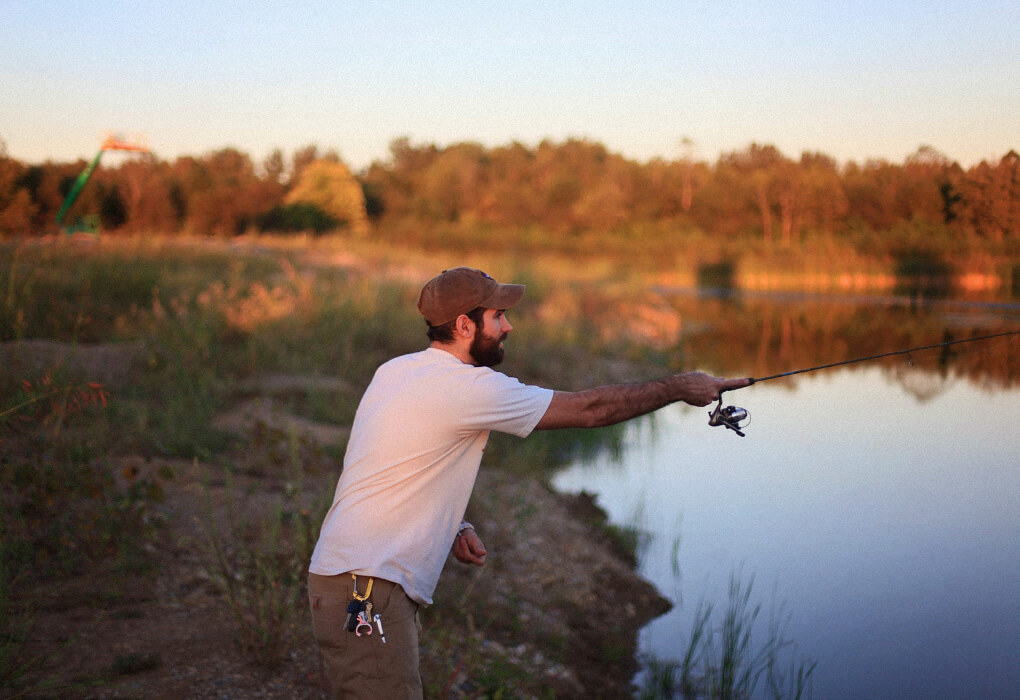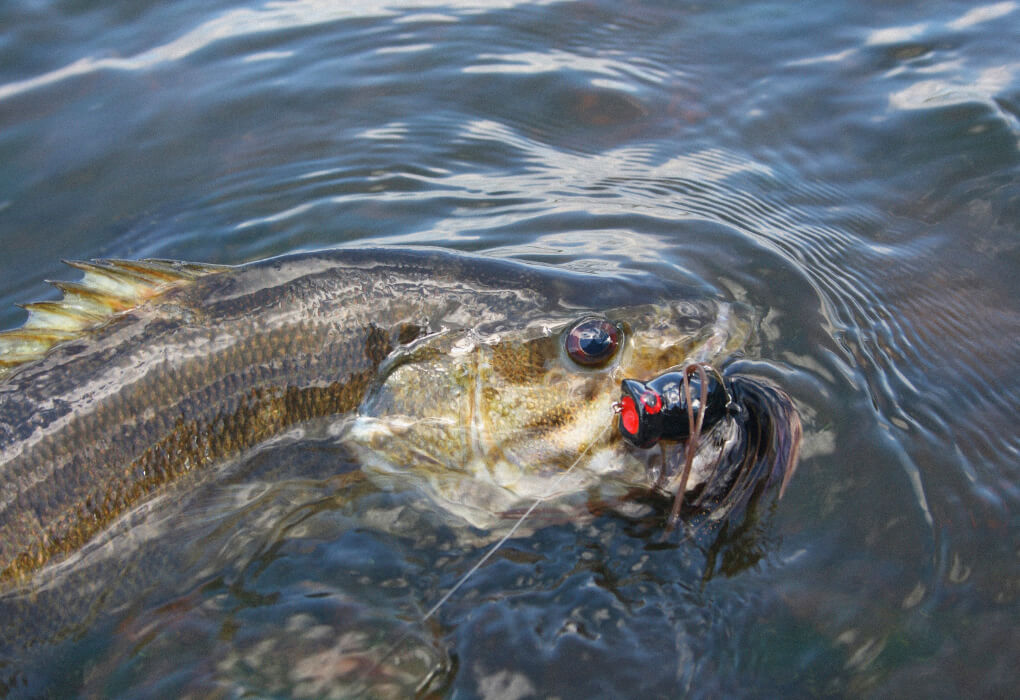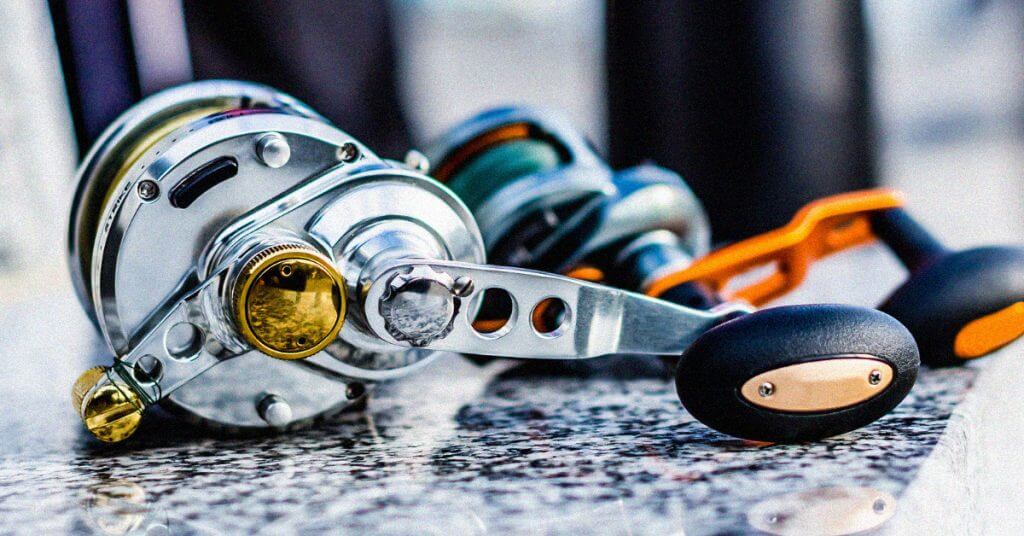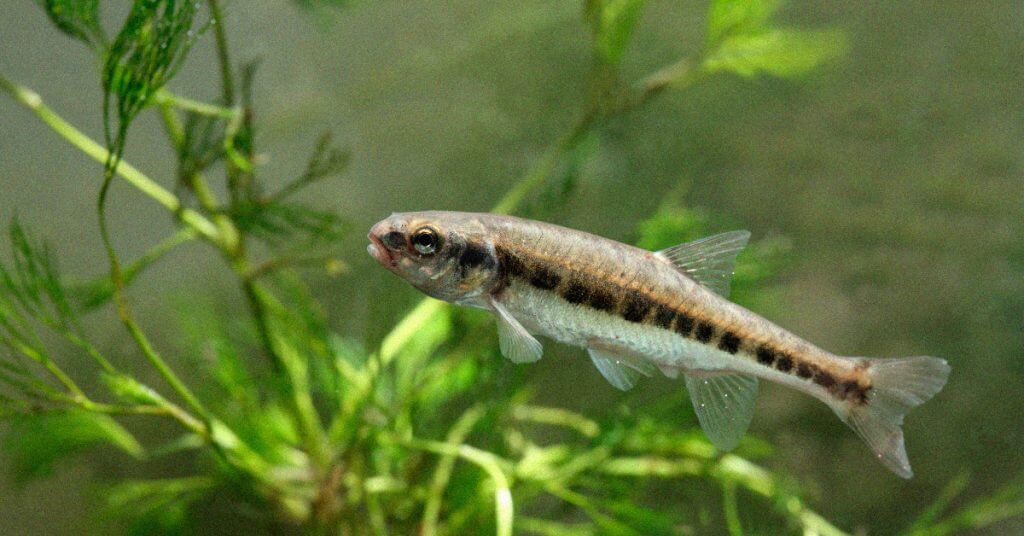Bass anglers use a number of different techniques when learning how to catch bass in a pond. However, if you’re unfamiliar with the terrain, it’s intimidating.
To help make your time on the water as enjoyable as possible, here are some tips and techniques for bass fishing ponds.
When fishing in a pond, you want to focus on areas that provide bass with cover and food. Points, corners and coves are all great places to start.
These areas usually contain structure that bass like to hide around, such as logs or rocks.
Also, look out for docks and trees that may provide shade or shelter for the bass.
If possible, use Google Earth to scout out potential sites before heading out – this will save you time and energy when you arrive at the spot.
Anglers.com writer & content creator, Wes Littlefield, gives us a masterclass on catching bass in a pond in the video above.
Table of Contents
Where to Fish in Farm Ponds

What kinds of places are you looking for to be the most successful fishing for bass in a pond?
Points
Points are areas of the water that stick out into deeper water or drop off quickly. These areas usually form an angle with the shoreline and can be found on both sides of the pond.
Ponds are often shaped in such a way that makes them ideal for bass fishing. Points along the shoreline provide perfect hiding spots for largemouth bass, as they’re ambush feeders and opportunistic hunters.
A point mixed with some cover like a rock or tree creates an irresistible haven. Plus, points make it easy for them to seek shelter quickly by transitioning from shallow to deeper water when needed.
Look for points that have good structure around them like trees, rocks, docks, or cattails. This is also where they will go when they want food since there is always plenty of baitfish drawn here by the structure.
Corners
Corners in a pond offer bass several distinct advantages. Corners typically hold more food than other parts of the body of waterdue to their sheltered nature.
Also, by acting as a natural funnel, they make it easier for these fish to hunt their prey more efficiently.
With three sides of the corner blocking off any escape route, bass can take full advantage of this strategic location to track down food more successfully than out in open waters.
Lastly, there is often less wave action and current here, it creates an ideal environment for aquatic insects, small baitfish, and other sources of food for bass.
Try casting close to the corner itself or even along its edges where the edge drops off quickly into deeper water.
Cover
Cover is essential when it comes to finding bass in a pond.
Bass love hiding under structures like dock pilings, logs and fallen trees, stumps and brush piles, rocks, weed beds and vegetation – anywhere that provides shelter.
Don’t forget pond scum either – those floating patches of algae are an often overlooked form of cover that can be surprisingly effective too.
When you combine cover with points and corners, you have a powerful trifecta that can yield big results when it comes to catching bass. So keep things simple – focus on these three areas.
Pond Bass Fishing Tips and Techniques
Cast Out and Drag Your Lure
One of the most effective methods for catching bass in ponds is to cast out your bait or lure and then drag it across the water.
You want to move your bait slowly so that it will attract the attention of any lurking bass. Try casting out your line at different depths, as this will give you greater odds of attracting a hungry fish.
Walk Over to the Site

Walking over to where you want to cast is also important when fishing in a pond.
Many local ponds are big enough to facilitate a kayak or small jon boat. While it can be really nice fishing from a boat, they can also make lots of noise and introduce unusual smells that will spook the fish.
Additionally, by walking you can move more slowly and be more observant as you look for signs of fish activity such as subtle movement in shallow waters, cover and weed beds, or lurking shadows around rocks.
Walking also allows you to have an easier time getting in and out of areas where it may be difficult for larger boats to access, giving you more chances to hook a big one.
Play the Angler of the Tree
Playing the angler of the tree involves casting your line directly into trees or overhanging branches so that it looks like an insect or other prey item has become stuck in them.
By doing this, bass are likely to come closer and investigate what appears like an easy meal.
This technique is particularly helpful if you are bass fishing in small ponds, where there may be fewer locations to choose from or too small to take out a small boat or kayak.
The biggest bass also hangout in the thickest cover. So finding a brush pile and getting your lure into the middle of it will give you the best chance of landing the biggest bass in the pond.
One thing to remember when using this technique is that its easy to get hung up. Be ready to pull the fish out of the brush ASAP when you feel a bite.
Best Lures for Pond Bass Fishing
When it comes to catching big bass in ponds, Texas rigged worms and weightless Senkos are great options for triggering a bite.
Topwater frogs can also be an effective way to catch bass lurking under the scum mats.
When fishing near weeds or grass, try Chatterbaits – their vibrating action mimics injured bluegill, one of a bass’ preferred meals in a pond.
Lightweight plastic lures such as plastic worms and grubs are especially effective for catching bass in shallow ponds as they can imitate smaller fish that feed on insects – an easy target for bass looking for a meal.
Additionally, crankbaits, spinnerbaits and swimbaits create a larger profile that can draw attention from the bigger bass in deeper waters.
Whichever bait you choose, make sure to adjust your tactics according to the how clear the water is at the time you’re fishing. Ponds can be far murkier than a lake making lures trickier for fish to see.
What Do Bass Eat in Ponds

Knowing the best pond bait will help you choose the right lure, so it’s important to keep in mind what bass eat, and they eat basically anything that moves.
Bass in ponds can feed on a wide variety of food sources, with the most common being bluegills and crawdads.
However, they are incredibly opportunistic feeders, so they can take advantage of almost any edible creature that comes their way – from small bullhead catfish and shad to earthworms, the options are almost endless.
Pond Bass Fishing at Night
Bass fishing at night in ponds can be really fun, especially during the summer months.
The warm water encourages fish to do most of their feeding at this time when it’s cooler, making it the perfect period for anglers to hunt for bass.
Two lures that are great for pond fishing at night are a black topwater toad and a spinnerbait.
The topwater toad is an excellent option as causes a lot of commotion making it an easy target for bass. A spinnerbait puts off plenty of vibrations which allows bass to easily find the lure even in the dark.
With a spinnerbait, anglers also benefit from its ability to easily weave through cover.
An important tip to remember when using these lures is to wait a few seconds before setting the hook—allowing the bass sufficient time to take a proper bite will make it easier to get a good hook set and increase your chances of catching a big bass.
Frequently Asked Questions
How do I catch big bass in my pond?
To catch big bass in a pond requires patience, observation and the right tackle.
Start by studying your pond. Look for areas where the water is deep but still gives bass plenty of cover, such as near sunken logs or near weed beds.
Once you have identified promising spots, switch to the right tackle.
When you cast out your line, take time to observe – look for any activity in deeper waters, such as signs of turbulence or changes in water color.
If you spot something unusual in your area, don’t hesitate to drop your lure nearby and give it some time to take effect.
Where do bass like to be in ponds?
The places where bass like to be in ponds are areas with plenty of cover.
This includes spots near sunken logs, rocks, and weed beds, but also any part of the pond that is deep enough to keep them safe while they feed.
Final Thoughts
Now that you know some tips and techniques for how to catch bass in a pond, you’re ready to hit the water.
Remember to focus on areas that provide cover and food for the fish, and use Google Earth to scout out potential fishing spots before heading out.
If you need help choosing the right lure, be sure to download our Bass Lures Cheat Sheet. With this guide, you’ll be able to figure out which lures will work best for your next fishing trip.




